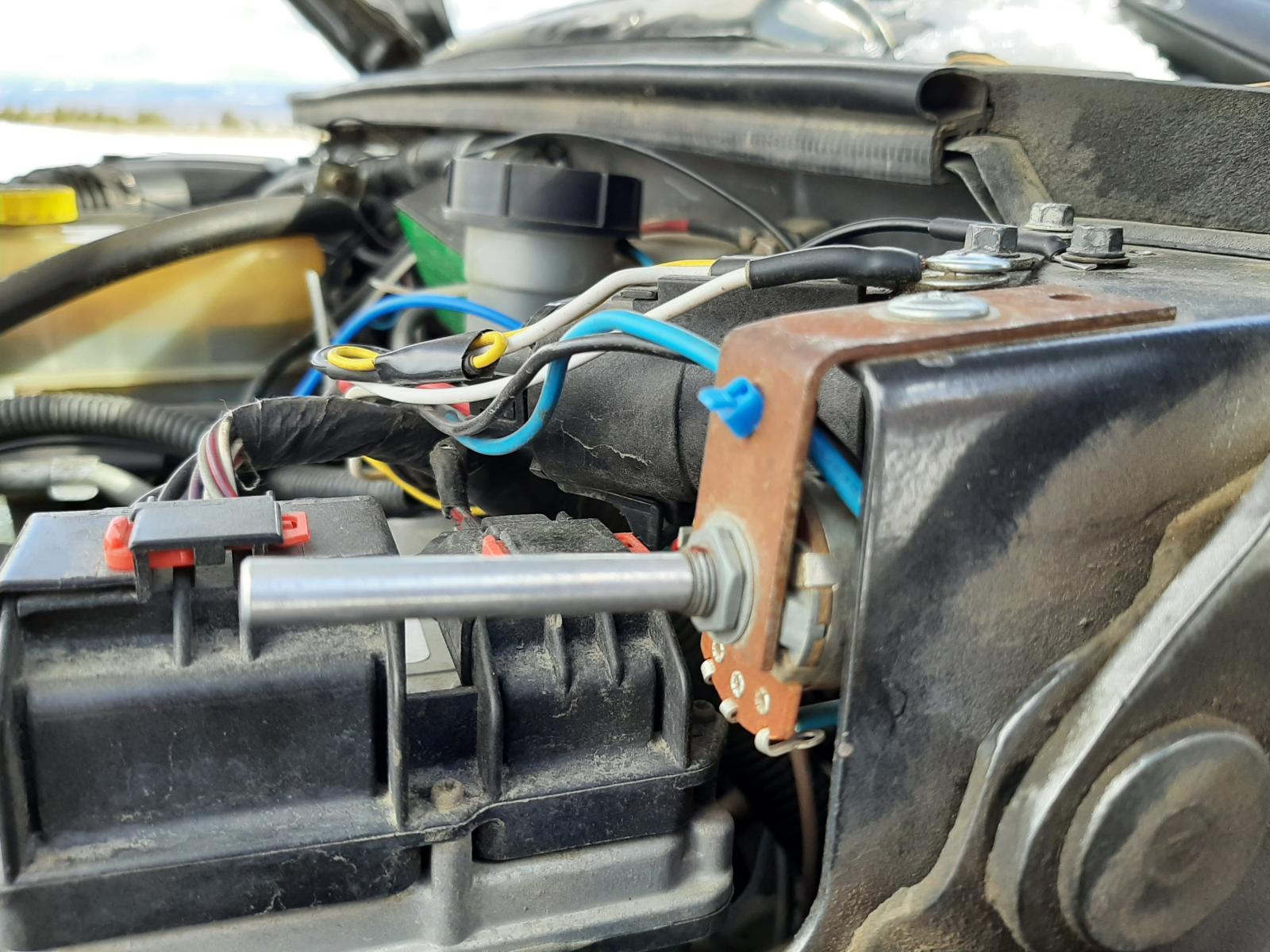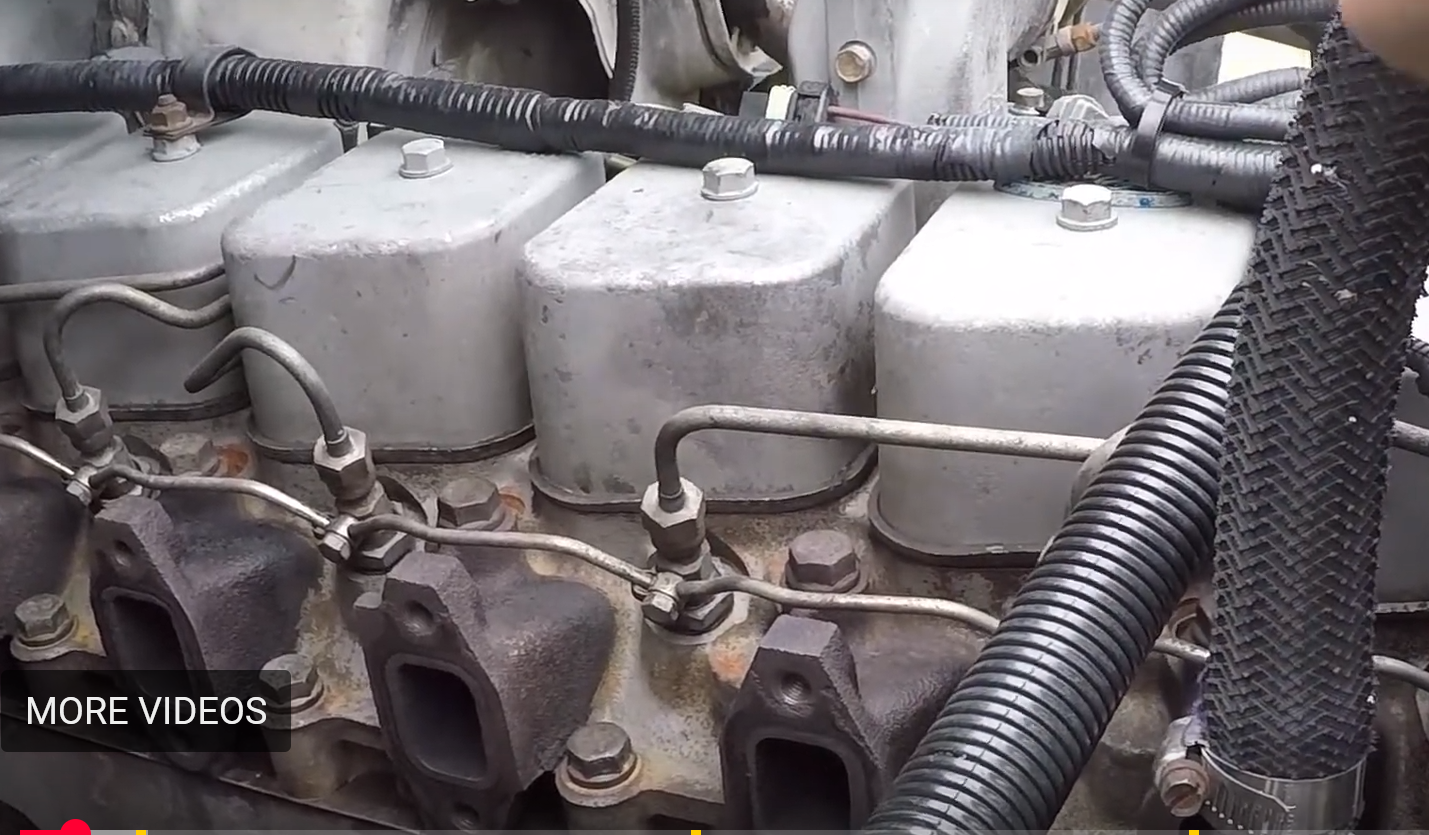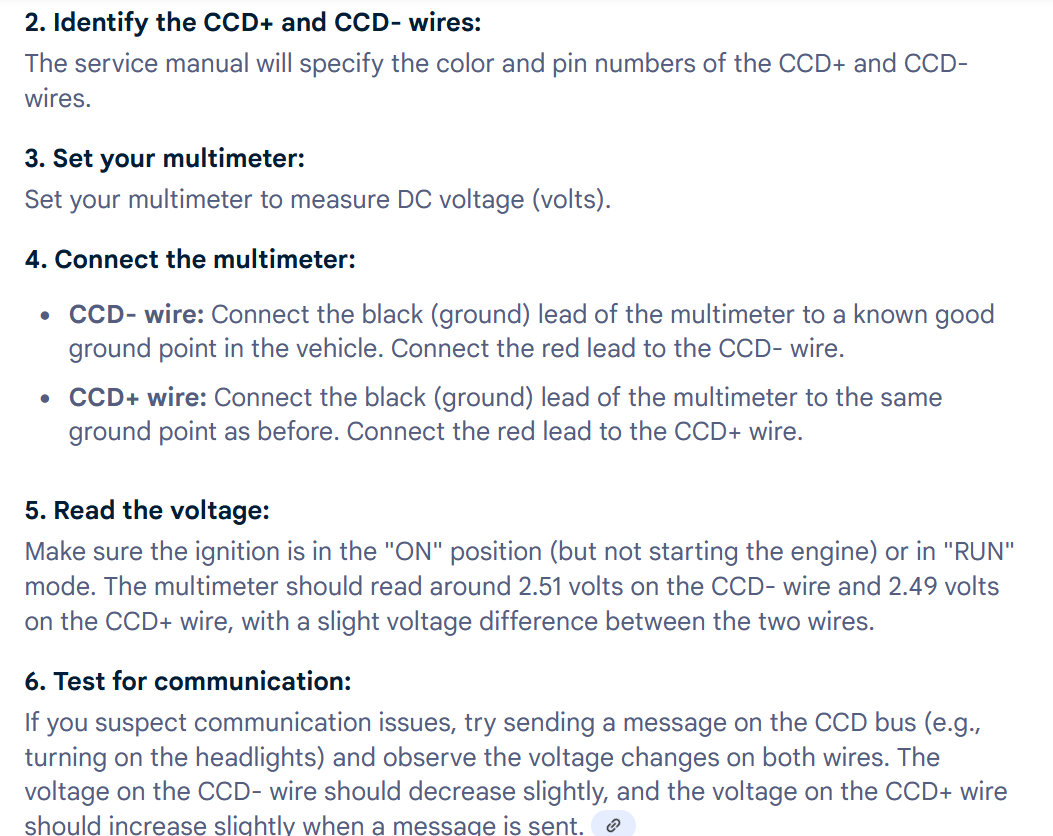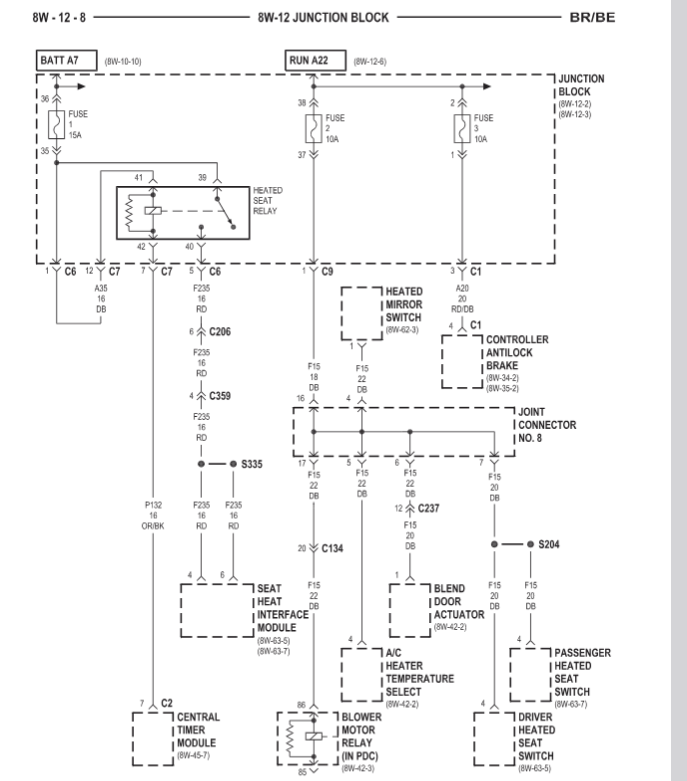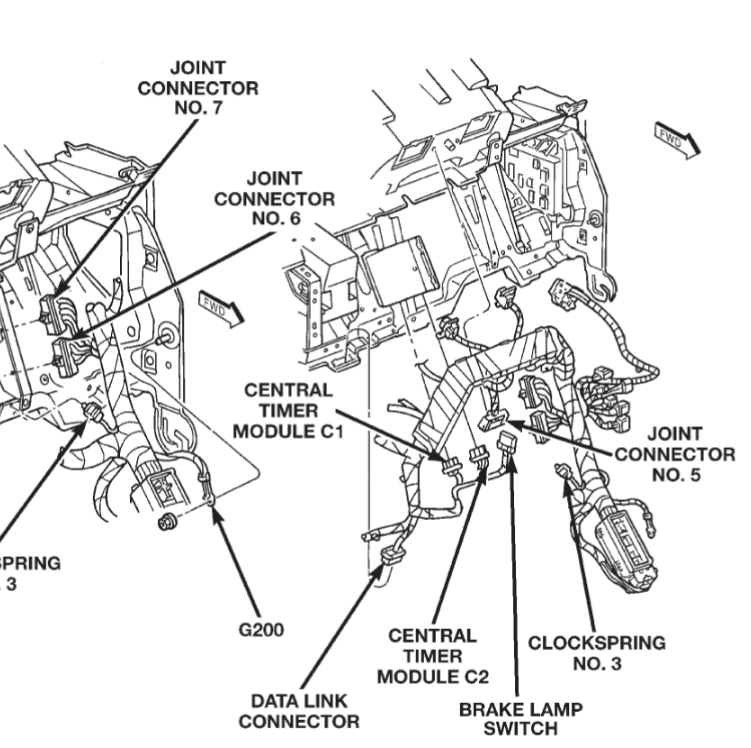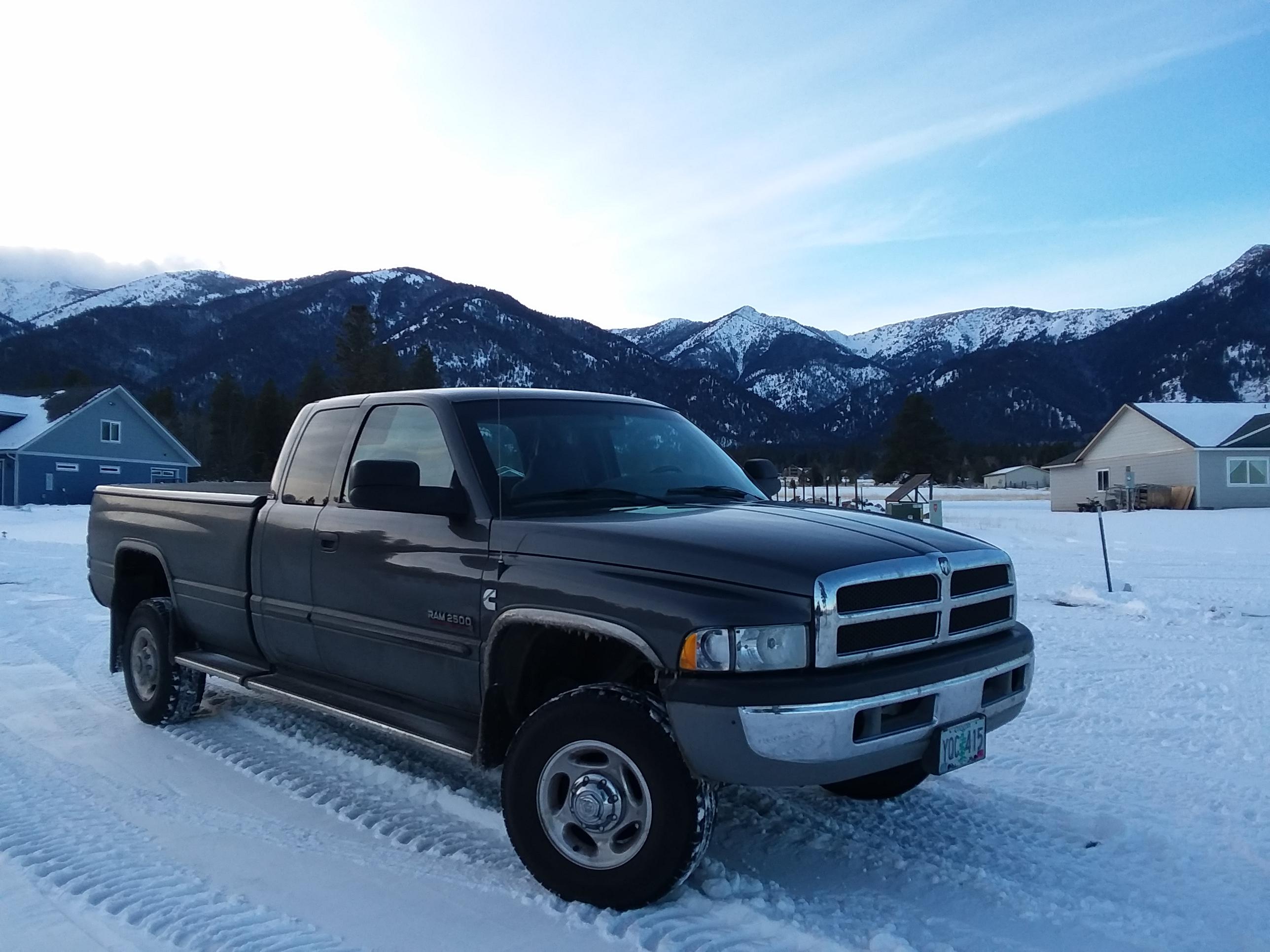
Everything posted by Tractorman
-
Problem with idle cut off
Ok, I understand. That should rule out a torque converter issue. It does make sense that something changed during the replacement of parts. If I recall, you have to move the throttle assembly to the side in order to access all of the injector lines. Is it possible that the throttle is binding and not letting the throttle fully return? If the throttle does not fully return every time, it is possible that the idle validation switch is not activated in the APPS circuit. It must be activated for the ECM to know to take over idling the engine. Engine idle is controlled by the ECM only - no other inputs. John
-
Problem with idle cut off
Don't focus on this. You could be right, but you also could be wrong. Another scenario (mentioned by @Mopar1973Man ) that could cause your issue is a low stall speed transmission torque converter. Larger injectors allow much more fuel to flow, so when the engine comes to idle, the ECM has to cut way back on fuel delivery (not so much with stock injectors). So, things like a low stall speed converter, or engaging the clutch with a manual transmission, can cause idle fluctuations while the ECM tries to correct. John
-
High idle when hot out
You asked, "What are the values of the potentiometer that you use? I like that idea quite a bit." Back in 2016, I tried a fixed output resistor of abut 2,200 ohms, but it set a code and I didn't have a scanner at the time to read the fooled temperature. So, I just bought a variable resistor and installed it (trial and error) and it worked. Later I purchased an OBDLink and dialed in the temperature of 143°. It is easy to make the modification - just buy a couple of Deutsch 2-pin connectors with pigtails from Amazon for the wiring. John Here are @Mopar1973Man 's observations.
-
High idle when hot out
I think you are correct. I am basing this on the fact that I am using an IAT fooler (potentiometer) that is adjusted to keep the IAT reading at a constant 143°F. I can tell the ECM responds to the setting because it does not advance the timing aggressively, as it does without the IAT fooler. I don't have the high idle switch on my truck. Maybe it would be worth completely removing the high idle switch to see if the symptoms change. John
-
Different thickness injector washers?
This photo is of a typical 12 valve engine. No crossover tubes. Fuel line are connected directly to the injectors, so injectors can be shimmed. John
-
Different thickness injector washers?
My guess is that if you change the height of an injector on a 24 valve engine, the connection point of the crossover tube to injector will be misaligned. John
-
Intermitten P1689
That's good news, as well as an inexpensive fix. I should replace my fuel pump relay just because it is the original and has logged almost 400,000 miles. No sense of waiting for it to become a problem - especially, an intermittent problem. Thanks for posting the fix. John
-
Problem with idle cut off
Glad to hear that everything worked out and thank you for reporting back. John
-
Bad intermittent drive line vibration at highway speed
It may seem like there is no interest here because you are not getting any more responses, but I think that we are at a loss of how to fix the problem. I would focus on the above paragraph since the truck was fine before the tire change. Did you replace all six tires, or just the four on the rear? Did you replace tires and wheels, or just the tires? Did you do any other repairs at the same time? Are the wheels centered on the hubs? John
-
Pilothouse/RAM3500 build
You certainly do good work!! John
-
1689 with HVAC
Were these readings with the P1689 code set or cleared? Were the readings different with the code set and with the code cleared? John
-
1689 with HVAC
I tend to agree with that conclusion, but I wouldn't rule out a ground issue. Poor grounds can cause irrational behavior and can mess with your mind. Have you tested the CCD circuit (as described below) while you are making changes in the blower motor circuit? It would be interesting to see if CCD voltage readings reflected a change when the "no buss" message showed. John
-
1689 with HVAC
It is only the blower motor relay coil (#85 and #86) that draws from this fuse. That current draw is less than 200 milli-amps. The switch portion of the relay (#30 to #87) carries the full load for the blower motor - #12 40 amp fuse in the PDC. Most likely you have a short circuit to ground downstream of the mirror heater switch / relay that is causing the blown fuse when you activate the mirror heater switch. At least you now know where to begin looking for this problem. Back to the "no buss" message issue - I will have to think about that some more. John
-
1689 with HVAC
Since you mentioned this, I did find a correlation between the heated mirror switch and the blower motor circuit. The 10 amp fuse #2 in the junction block feeds Joint Connector #8 which connects to the mirror heater switch and some other components INCLUDING connection to the coil of the blower motor relay. Was it the #2 fuse in the junction block that blew? John
-
1689 with HVAC
From the FSM, the blower motor and HVAC controls ground at G200 which looks like a stud behind the kick panel. Hopefully, this illustration can help (unless, of course, you have already seen it). John
-
1689 with HVAC
This is probably clear in your mind, but it is confusing to me. I am not quite sure of what you are saying. Can you write it differently? Example: Saying "no buss" message can mean something different than saying no buss message. Maybe you can say, "I am getting the P1689 code "no buss" message"; or "I am no longer getting the P1689 code, "no buss" message." Thanks, Edit: I reread your posts and I think I know what you are saying. John
-
1689 with HVAC
Sounds like you are on the right track! Keep us posted. John
-
Problem with idle cut off
Thank you for the details of your repair history along with the timeline. This helps. If I am understanding correctly, the engine runs fine now except for the brief low idle or the stalling. Have you driven the truck? How does it drive, other than the brief low idle or the stalling? I am beginning to think that it is injector related. John
-
Problem with idle cut off
Exact details are important here. In your mind you know exactly when you did everything - we don't, you have to tell us. Please answer each question. Why did you replace the VP44 - what was wrong with it? What were the symptoms? Did you replace injectors, tubes, and lines before or after the VP44 replacement? Did you use the key that came with the re-manufactured VP44 ? Have you inspected the electrical connector to the PSG for pins that could be pushed back? It is hard to know with the video what you are doing with the throttle. I think it is clear that the engine idles as it should. When you step on the throttle in the first video, did you make the rpms go past 3,000 rpm, or did that happens on its own? Please, don't skip any questions. Thank you, John
-
Problem with idle cut off
@jeremyf9806 , you have an unusual problem. Can you give some history on the parts that you replaced. Which parts were replaced before the problem and after the problem. What was the reason that caused you to replace the VP44 injection pump? Since the engine starts quickly and idles smoothly, leaks or injectors are not likely to be your problem. The leaks need to be repaired and they could make the engine hard to start after it sets awhile, but they are not making the engine behave as you describe. The programmer is a possibility. I would completely remove the programmer electrically. I would double check the electrical connection to the PSG on the VP44. Make sure that a pin has not been pushed back inside of the connector. Regarding the new re-manufactured VP44 injection pump that you installed - is the PSG new or re-manufactured? was the re-manufactured pump tested on the Bosch 815 test stand by the rebuilder? Assuming that the engine was operating normally before you replaced the VP44, I wouldn't worry about checking the valve lash. John
-
Vp44 Injection Pump advice
I can't answer that particular question. Personally, I would be looking for three things with a re-manufactured VP44 injection pump. a new PSG latest updates through an authorized Bosch rebuilder the VP44 injection pump to be rigorously tested by an authorized Bosch rebuilder, using the Bosch 815 test stand If the pump supplier cannot confirm these three things, then I would move on to another supplier. When it comes time to replace my replaced VP44, I will be following my own advice. By the way, my replacement VP44 has now logged over 310,000 miles. John
-
Vp44 Injection Pump advice
Yes, it is likely. I would verify that you have good lift pump flow, though. The P2016 code is usually a timing related code and will de-rate the engine power until it corrects itself. The advanced timing that you heard at the fueling station triggered the engine de-rate and set the code. I would not purchase the VP44 that you are asking about at Diesel Auto Power. That pump comes with a re-manufactured PSG and it is not calibrated to the pump using the Bosch 815 test stand (about a 4 hour test, I think). I believe DAP does sell a more expensive model with a new PSG that is calibrated to the pump. Maybe @Mopar1973Man can verify. You are probably okay to continue to drive the truck if you need to - you can probably change your driving techniques for the interim which will help avoid the engine de-rate. I had the same symptoms on my truck about 20 years ago. I learned how to drive the truck to avoid the engine de-rate. I drove it for another year (20,000 miles) before I had the VP44 pump replaced under warranty at the time. John
-
1689 with HVAC
Most of the the HVAC circuit consists of switches in the ground side and there is a blower motor relay and an AC clutch relay as well as a refrigerant low pressure switch. There is a 12 volt supply to the blower motor and the AC clutch relay. I would be more inclined to trace wires in the CCD bus circuit as those pair of wires can only be connected to components operated within CCD system - nothing else. Not that Joint Connector #7 is a hub for connecting to many of the CCD components in the system. John
-
1689 with HVAC
Maybe the previous owner has messed up the wiring somehow. It may be worth physically tracing the CCD bus circuit to see if any wiring has been damaged or tapped into. John
-
1689 with HVAC
Running the 10 gauge wire from the dash to the negative battery terminal was a good test, but your test results indicate that the body ground is NOT the problem. As far as I know, there are only two ground connections for the HVAC control panel and the blower motor - ground # 200 and # 201 - both are connected to the dash, just separate locations. Not sure where to got next. John




